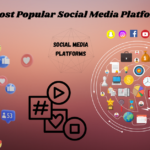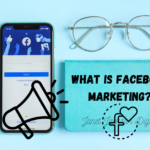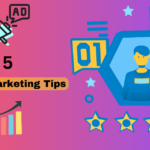Last Updated on June 15, 2024 by janetjacksondigital

The internet has been an a vital element to our everyday lives. It’s where people meet to share their stories, and interact with one another. Advantages of Social media Promotion has become an essential element of digital marketing for companies. In this post, we’ll examine the benefits of social media advertising, as well as practical applications and advice for attaining success.
What is Social Media Advertising?
Advertising on social media is the act of generating and distributing advertisements across different social media platforms in order to advertise products or services. It entails concentrating on specific groups according to their behaviors, interests, and other traits. Social media advertising comes in different forms, such as sponsored tweets, promoted posts, advertising on paid-search and display ads.
Social Media Benefits
Who is most likely to gain from advertising on social media?
Advertising on social media can be beneficial to many different companies, such as:
- Smaller businesses seeking to increase their brand’s visibility and reach new customers.
- E-commerce businesses hoping to boost both the quantity of sales and visitors to their website.
- Large corporations who want to keep a strong social media presence as well as engage with their followers.
- Nonprofit groups looking to further their mission by raising money or visibility.
Pros and Cons of Social Media Marketing
Pros:
- Cost-effective: Advertising on social media is typically less costly than traditional methods of advertising.
- Advertisements: That are targeted Social media platforms allow companies to target certain viewers based on demographics preferences, behavior and much more.
- Increased Reach: With more than 3.6 billion users on social media in the world companies are able to reach a large audience.
- Brand Recognition: Social media advertising aids businesses in increasing their brand’s recognition and visibility.
- Enhanced Involvement : Social media advertisements push people to communicate with brands directly by like, commenting, sharing, and messaging them.
- Measurable Outcomes: Businesses can use particular measurements and analytics provided by social media advertising to gauge the effectiveness of their ads.
Cons:
- Ad Fatigue: People can be unable to respond to ads as time passes, resulting in less engagement.
- Ad Blocking: A lot of users install ad-blockers, which block users from seeing ads altogether.
- Competition: With all the companies advertising on social networks and competing for attention, the battle can be intense.
- A Limited Attention: Span Social users are prone to a sluggish attention span, which means that businesses need to create engaging content to entice them.
- Negative Feedback: Negative feedback or reviews could damage the image of a company when they are not handled properly.
When Should You Use Social Media Advertising?
Advertising on social media should be utilized when a company would like to:
- Affect a greater number of people.
- Enhance brand awareness.
- Bring traffic to a site (or landing page).
- Make a promotion for a sale or an deal.
- Create a brand new service or product.
- Engage the audience.
How to Do Social Media Advertising Effectively?
To reap the maximum benefits of advertising on social media platforms companies must follow these steps:
Step 1: Set Specific Goals
Before you begin a campaign, you must determine your objectives. Common objectives for social media ads include increasing traffic to websites in turn, creating leads, and increasing sales.
Step 2: Choose the Right Platform
All social networks are not in the same way. Each platform comes with distinct audience demographics as well as advertising features. Businesses must choose the platform(s) which are in line with their intended audience and ad goals.
Step 3: Speak with the Correct People
Companies can target particular audiences with social media advertising by focusing on their demographics, interests, and other behaviors. The more effectively a company targets its customers the more effective the ads it will run.
Step 4: Create Engaging Ads
The users of social networks are bombarded by advertisements every single day. In order to stand out from the crowd, companies have to design compelling advertisements that draw their audience’s focus. This requires eye-catching images with clear messages, as well as a compelling call-to action.
Step 5: Analyze and Optimize
Advertising on social media provides companies with precise metrics and analytics that can track the performance of their ads. By studying this information businesses can make improvements to their advertising and make tweaks to improve their results.
Alternatives to Social Media Advertising
Although social media advertising can be a great method of reaching a large public, it’s not the only choice. Here are some alternatives to think about:
- The Search Engine Marketing (SEM): SEM entails placing ads on search engine result pages to get the attention of users searching for certain keywords.
- Email marketing: This entails sending out promotional emails or newsletters to customers by email.
- Influencer Marketing: Influencer marketing is collaboration with those with a huge audience on social networks to advertise the products and services.
Some Advice for Effective Social Media Marketing
To ensure the success of advertising on social media Businesses should adhere to these steps:
- Find out who your audience is and create ads that are tailored to them.
- Use captivating images and text to draw the attention of your audience.
- Try different ad formats as well as targeting strategies to determine what is most effective for your company.
- Regularly assess the effectiveness of the advertisements and make any required adjustments.
- Follow the latest updates on algorithm changes and social media trends.
A Comprehensive Guide to Social Media Marketing
This is a step-by-step tutorial to help companies get started by utilizing social media to advertise:
Step 1: Choose the Right Platform
The first step for the process of advertising on social media platforms is choosing the appropriate platform for your company. Each platform offers its own audiences, demographics for advertising and capabilities for targeting. Increased Input Improved Interaction: Social media ads encourage users to message, like, comment on, and share brands in order to have direct conversations with them.
Step 2: Define Your Objectives
The next step to take in advertising via social media is to determine your objectives. Are you looking to bring visitors to your site to increase brand recognition, and generate leads? The definition of your goals can aid you in creating more efficient ads and evaluate the effectiveness of your ads.
Step 3: Budgeting is Step
Although social media advertising is inexpensive, budgeting is necessary. The majority of social media platforms provide different pricing options that are flexible like pay-per-click (PPC) as well as cost-per-impression (CPM).
Step 4: Select Your Viewership
The opportunity to target specific audience segments is one benefit of social media advertising. Determine your audience’s target by analyzing demographics, interests behaviours, etc.
Step 5: Create Compelling Ads
Making compelling ads is essential for the effectiveness of social media marketing campaigns. Make use of eye-catching images as well as clear messages and compelling calls to action to capture your viewers’ attention. To determine which ad styles and messaging are most effective, you may want to think about conducting A/B tests.
Step 6: Start Your Ad Campaign
Once you’ve designed your ads, it’s now time to start your campaign. Make sure you set your ad’s duration and budget and make sure the targeting options you have properly set. To optimize your success, regularly monitor the effectiveness of your advertisement and make necessary adjustments.
Evaluating Social Media Advertising in Relation to Other Advertising Formats
Online advertising includes, among other things, social media advertising. Let’s look at how social media advertising compares with other types of advertising:
Traditional Advertising
Traditional advertising is the practice of placing advertisements in printed publications as well as on billboards or on TV and radio. Although traditional advertising is efficient, it’s typically more expensive and is less specific than advertising on social media.
Search Engine Marketing (SEM)
SEM is the practice of placing advertisements on search engine result pages. SEM is effective for businesses that have a certain intended audience, but it is costly in the event of bidding on keywords that are competitive.
Email Marketing
The practice of sending out newsletters and promotional mailings over email is known as email marketing. Although Email marketing can be effective in reaching an audience that is enthralled but it’s not as precise as advertising on social media.
Influencer Marketing
Working with individuals who have large social media followings to promote goods or services is known as influencer marketing. Influencer marketing can be successful however it can cost a lot of money and it is difficult to determine the return on investment.
The Top Social Media Sites for Promotion
Not every social media platform approaches advertising in the same manner. Here are the top social media platforms to advertise on, according to their capabilities for targeting and ad formats.
- Facebook: The biggest social media platform that offers an array of advertising formats, such as image advertisements, videos carousel advertisements, and many more. Facebook capabilities for targeting are extremely advanced, allowing companies to target particular users based on their preferences, behavior and demographics.
⏩ Leading Companies for Facebook Marketing (2024) - Instagram: This serves as a visual platform for showcasing the goods and services. Instagram has a wide range of advertising formats, including video ads, photo ads, carousel advertisements, and much more. Companies can target groups based on their interests or behaviors as well as demographics.
- LinkedIn: For business-to-business (B2B) advertising, LinkedIn is the most polished social media site. LinkedIn provides a range of ad formats including sponsored content as well as sponsored InMail and display advertisements. Companies can target certain groups based on job titles or industries, among other.
- Twitter: It is a fast-paced social media platform that makes it an ideal platform for advertising events or sales that are time-sensitive. events. Twitter provides a range of advertising formats, such as promoted tweets and accounts and much more.
Conclusion
Advertising on social media is a crucial element of digital marketing for companies in the present. It lets businesses connect with a large public, build brand awareness and increase customers to their website as well as landing pages. Following the guidelines in the article companies can design more effective social media marketing campaigns and enhance their results. It is important to evaluate it with other types of advertising to figure out the best strategy for your company.

My name is Janet Jackson Seo and I work as a SEO Expert. I appreciate the process of developing an innovative approach and employing logic, particularly when it concerns future studies and SEO optimization. As an SEO expert I have known how to set up SEO campaigns fully and how to monitor their achievements.





